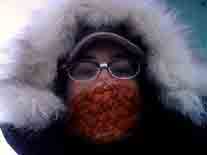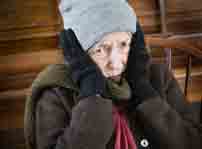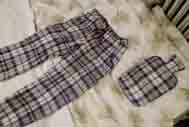|
HypothermiaThe Prevention and Treatment of HypothermiaKeeping Warm in Cold Weather
You need to keep warm when there is cold weather because getting cold can kill. Hypothermia is when the body temperature is allowed to fall to less than 35C. If the body temperature is below 32C there is a serious and present risk to maintaining life. If the body temperature falls below 28C this is usually known as severe hypothermia and needs immediate medical intervention. Preventing hypothermia?You can prevent hypothermia by some fairly obvious, but not always considered, measures. This article is written because many people tend to underestimate the risk of hypothermia and fail to use all the means at their disposal or try to save money.
Keeping Warm During the Day
Keeping warm at night
Keep DryGetting clothes wet when it is very cold is potentially dangerous. Body heat is quickly lost when clothes next to the skin are wet and cold. The insulation effectiveness of outer clothing is affected adversely when wet. If you get wet when it is raining or snowing, get out of wet clothes as soon as possible and put dry clothes on. The role of Insulation in the home
Insulation does several things which are helpful. Insulation saves money on heating and makes heating quicker and more effective, although payback for investment varies on all measures taken.
All the above measure saves and reduces money on heating costs quickly. More Insulation Tips
If you can afford it double glaze windows and insulate cavities in walls. These measures take much longer to payback but double glazing reduces cold spots in the house. Insulating cavity walls keeps more warmth in.
Draught proofingIt is important to fit draught proofing to all gaps around doors and windows. There is a need for ventilation but ventilation should be controlled and fitted. Do Not Forget Floors. Floors lose heat. Some floors can be insulated. Alternatively put down rugs and carpets during cold weather. Tiled and concrete floors lose a lot of heat. Consider Night Storage HeatersIn some countries electricity may be sold cheaper during certain times of the night. You usually need a qualified electrician to inspect and say whether your electrical system is robust enough for night storage heaters. Night storage heaters heat up at night when electricity is cheapest and let out heat during the day. Night storage heaters tend to be bulky. But they can provide useful background heat and should be considered if you are living in cold climates.
Recognizing Hypothermia
If the hypothermia is not treated then the person affected normally drifts into coma with slow or no breathing and slow or no peripheral pulse. Death from severe hypothermia is inevitable unless medical intervention is made.
Treating HypothermiaTreatment of hypothermia is normally aimed at raising the core temperature first to protect vital organs. A space blanket or warm clothing and blankets are used to stop further loss of core temperature and the person affected has to have the room temperature up to about 24C or be moved to a warmer environment. Once the person affected has severe hypothermia and loses consciousness they need urgent medical attention where radical methods of increasing core temperature will be utilized. Again during transport as much warm clothing as possible should be used to prevent further loss of core temperature. Coughs, Colds and InfuenzaCoughs and colds are spread by being in close proximity to infected persons. Avoid contact with people who have coughs and colds. If you have a cough or cold reduce contact with other people, at least try and contain spread of the diseases to people in your household. Infuenza is also spread by close contact. The same rules apply as in coughs and colds but you can get inoculated against some forms of Influenza. Consider inoculation seriously if you are elderly or frail. Winter ChecklistThese are the things you must do as winter approaches in order to protect ourselves from hypothermia. Here are three important precautions to take each year before the cold really sets in.
Contributed to agewell.org by Richard K Ryland
Top of Hypothermia Back to Age-well.org |
Translate this Site
Search This Site
Loading
Subscribe to E-Zine
Support this Site
|
Holiday SpecialsFor Holiday Specials at Amazon, Click Here
|
| |||||





